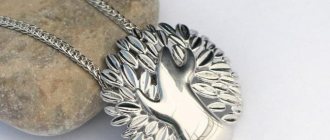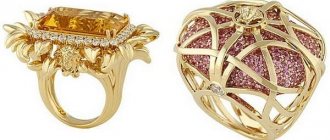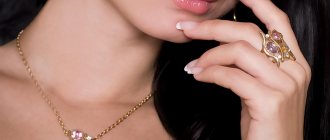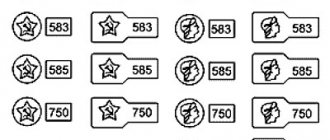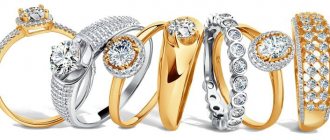Since ancient times, people have been attracted to jewelry made from precious metals. They are made by representatives of the jeweler profession - craftsmen who turn gold and silver into works of art.
A jeweler is a craftsman who makes and repairs jewelry. Jewelry art refers to decorative and applied arts and is the creation of jewelry from precious metals and stones.
It is believed that the profession of jeweler originated in Ancient Egypt. During excavations of the pyramid of Djoser, ancient jewelry was discovered. A pharaoh ruled Egypt around the 3rd millennium BC. However, radiocarbon dating of the items found in his tomb showed that they were created much earlier, and their approximate age is five thousand years. This is the most ancient jewelry that has ever been discovered. In this regard, it is assumed that the profession of jeweler has also existed for at least five thousand years.
Description
The main task of a jeweler is to make jewelry. Some craftsmen additionally repair products or adjust the sizes of bracelets, rings and chains.
In his work, a jeweler uses so-called hand tools: files, jigsaws, drills, and torches. In addition, the work uses heavy equipment: microscope, laser, ovens and injection molding machines.
The profession is creative, but at the same time it is suitable for people with a technical mindset. Knowledge of mathematics, chemistry, geometry and physics will be useful in your work. In addition, the master must feel the aesthetics of the product. A developed artistic taste will help you create jewelry that will please the eye.
What does a jeweler do
The duties and functions of a jeweler are determined by the professionalism and profile of the master. At the workplace, he performs a large amount of work every day, consisting of 90% manual labor and 10% intellectual labor.
Basic actions of a jeweler:
- creating a sketch of the product - elaborating the project, modeling the future decoration. The master must think over the shape and individual elements of the object, select options for its finishing based on the techniques he owns;
- elaboration of the blank - you need to cast the base, giving it a shape and setting the size, as well as mount all the metal parts of the decoration and process them;
- performing basic work - a creative process, during which actions are carried out to apply patterns and designs, engraving the product;
- installation of stones and additional elements - processing of components, their reliable fixation on the base;
- final processing of the product - applying enamel, spraying, treating the object with a protective coating.
The work of novice jewelers is limited to creating individual elements of future jewelry and preparing raw materials. Gradually, they begin to be involved in the development of blanks, the connection of similar parts, and the formation of the final product.
pros
New technologies have not spared the jewelry industry either: more and more devices are appearing that eliminate the need to perform some harmful operations manually, such as casting. Nowadays, modern computer-controlled machines are used that work with wood, metal, and wax. If you need to manually cut out a fragment in a month, then the machine will cope with the task in two minutes. Therefore, there is no need to be afraid of the difficult process of manual labor - now many of the jeweler’s tasks are performed by machines, and there is more free time for the creative part of the work.
Another advantage is the visible, concrete result of the work. In the process of creating jewelry, everything often looks disordered, but the result of the work is always solid - it is a finished piece that pleases both the author and the customer.
The jeweler always has a file, jigsaw and other hand tools at hand
Salary and employment prospects
The profession is one of the most in demand: jewelry salons constantly advertise vacancies, workshops for making and repairing jewelry are open in all cities. It’s not difficult to get a job, and what’s important for this is not so much a document about graduating from an educational institution, but rather a skill. Most craftsmen do not have higher education, and sometimes even any diploma or certificate. Salary depends on qualifications, region and place of work. On average, a beginning master earns 15-25,000 rubles per month. Experienced and famous jewelers can earn from 30,000 to 100,000. Higher earnings are available only in Moscow.
Minuses
The main disadvantage of the jeweler profession is that it is not universal and is not suitable for everyone. This profession involves working with high temperatures, harmful metals, acids, and therefore has always been considered suitable only for men. However, now there are more women jewelers, which is associated with the development of different areas in the production of products. However, only men can spend a lot of time at the workbench, passionately creating jewelry. Perhaps this is one of the reasons why women still have a difficult time in this profession today.
Another disadvantage of the job is that a considerable part of the money earned is spent on equipment and consumables. High-quality materials are needed, and there is often a need for a large number of different tools. For example, in several types of files. Many tools are created by the jeweler himself for a specific task.
Is professional growth possible?
Most often, a jeweler's career begins with work in a factory or plant. Gradually improving his own skills, a specialist receives ranks. The highest is the sixth. Professionals of this level often move to management positions: they become shift supervisors, heads of workshops and departments.
In general, jewelers have many opportunities, including for making good money. Having received a high rank, it is worth working on designer products. In this way, masters open their way to professional exhibitions and acquire their own clients. As a result, many manage to open a workshop or jewelry store. If you don’t want to do business, then you can easily climb the career ladder by working at a jewelry factory.
If you still have even the slightest doubt that the jeweler profession is right for you, then we strongly recommend taking a career guidance test from Profguide . It costs mere pennies, and at the same time allows you to avoid mistakes that can go in the wrong direction and cripple your whole life. Find out more >>
Where to study
You can learn jewelry art at specialized educational institutions, as well as through paid courses. When taking courses, you have the opportunity to immediately try to put your knowledge into practice. There is also a lot of useful information on the Internet. For a novice jeweler, the most convenient option is training videos, where everything can be examined in detail.
Educational establishments
To become a jeweler, it is not enough to take courses or receive secondary specialized education. Of course, during his studies, the future master receives the necessary basic knowledge of materials, gemology (the science of the chemical composition of precious and semi-precious minerals), drawing, composition, and masters the skills of working with equipment. However, further training occurs in the process of work, in practice, where the jeweler improves his skills independently.
You can study to become a jeweler at the following educational institutions:
1) Russian State University named after A. N. Kosygin. Direction: decorative and applied arts. Profile: artistic jewelry design. Duration of study: 4 years. Upon completion of training, a bachelor's degree is awarded.
2) Moscow State Academy of Arts and Industry named after S. G. Stroganov, Department of Artistic Metal. Duration of study: 4 years. 3) College of Decorative and Applied Arts No. 36 named after Carl Faberge. Program: Jeweler. Duration of training: from 1 to 3 years. 4) College No. 13 named after P. A. Ovchinnikov. Program: Jeweler. Duration of training: from 1 to 3 years.
Courses
For those who want to learn the basics of jewelry making or improve their skill level, there are specialized courses.
The Carl Faberge College of Decorative and Applied Arts offers professional retraining courses in the following programs: jeweler-mounter, jeweler-setter, jeweler-filigree maker. Duration of training: 8-9 months.
The “Handmade Jewelry Making” course at the Jewelry School is designed for 10-18 months and is suitable for those who have completed secondary education.
The School of Contemporary Jewelry Design j-design.pro has a short course “Basics of Jewelry Making” lasting 8 lessons.
Brief history of the profession
A jeweler is a specialist who designs, manufactures and repairs all kinds of jewelry: rings, bracelets, chains, earrings, pendants, brooches, tiaras, cufflinks, body jewelry and much more. The name of the profession comes from the Latin “jocellum”, which means “jewel”.
It is believed that jewelry making originated during the time of the ancient Egyptian pharaohs - about 5,000 years ago in Ancient Egypt. This is evidenced by gold jewelry found during excavations of the burial place of Pharaoh Djoser (3200–2800 BC). At the moment, these gold items are considered the oldest. They looked somewhat primitive, but still amazed with their beauty and originality.
Jewelry art reached a new level in Ancient Greece. Ancient masters were considered the best jewelers; students from all over the world came to them to learn the subtleties and features of this craft. The knowledge gained was supplemented by their own cultural traditions and their own ideas, thanks to which many new techniques, styles, types of weaving and ornaments were born.
Scythian and Arab jewelers also earned an excellent reputation for creating sophisticated and elegant products. Somewhat later, Byzantium took the leading position. In Europe, Mediterranean masters enjoyed special respect. It is believed that jewelry making on the territory of present-day Russia originated from the time of the emergence of Kievan Rus - at the beginning of the 9th century AD. Gold items from Kyiv were especially valued here.
How jewelry is created
— How long does it take to make one decoration?
- It depends on what to do. A pair of wedding rings can be made in half an hour. 100 g chain - about five hours. And there are some orders that you sit on for a week. I spent five days, seven hours each, working on the “Byzantium” or “Fox Tail” weaving chain: it is assembled from many rings, a very difficult job.
This is what the Fox Tail weave looks like.
— What tools does a jeweler use?
- There are simply a trillion of them. Many of them are familiar to everyone - a jigsaw, a gas torch, wire cutters. Some tools came from dentistry, and special ones include a furnace, a polishing machine (I made it myself), and an ultrasonic bath for washing products.
Some of the tools a jeweler uses.
— What is the process of making jewelry?
– It all starts with a sketch, and then we either create a 3D model and use it to make a product in a special oven, or we make the decoration by hand. I prefer to work with my hands. For example, this is how the process of making a ring works.
First, the metal is melted in a crucible.
The metal is poured into the mold, we begin to form a square out of it.
The metal must be constantly heated red-hot to remain ductile. The finished square is rolled in rollers and joined into a ring with solder. In order for this semi-finished product to turn into an even circle, it is tapped with a wooden or textolite mallet, which does not leave marks on the metal.
The ring size is checked with a ring gauge or caliper.
Sanding removes all imperfections and creates a scratch-free surface.
Then we polish the surface on a polishing machine. When polishing, pastes of various fractions are used, they make the surface mirror-like.
The final stage is to wash the product in an ultrasonic bath. The entire process of making the ring took 25 minutes.
— Was it ever that you wanted to keep a piece of jewelry made for another person?
- Was. Large ax pendant on a thick chain. For the first time in my life I felt sorry for giving an order.
The same axe.
— Do you have to redo a thing if something is wrong?
– It happens that when I myself don’t like the result, I redo it until I’m satisfied. And the customer sees the product several times in the process, at “semi-finished” stages, and can make his own adjustments.
— Does it happen that you dissuade a customer from some absurdities?
– No, I never impose my opinion, I can only suggest, but not dissuade. Whatever a person wants, the main thing is that the decoration brings him joy.
facts about jewelry

